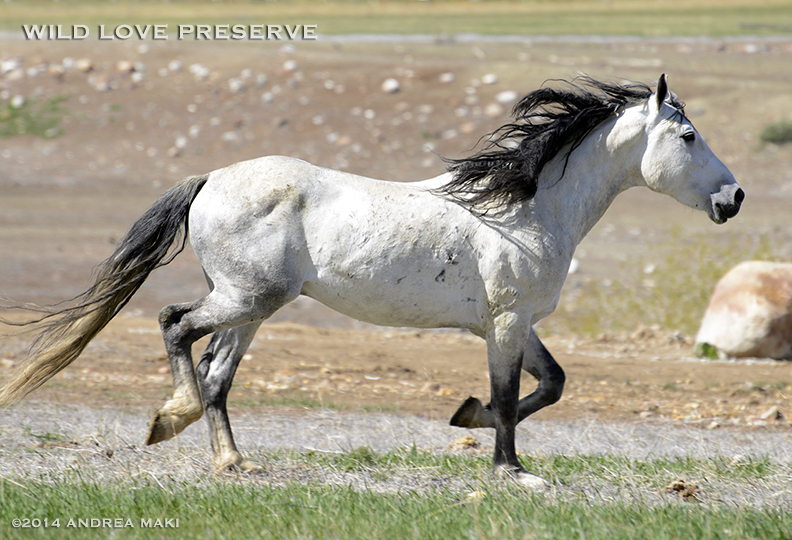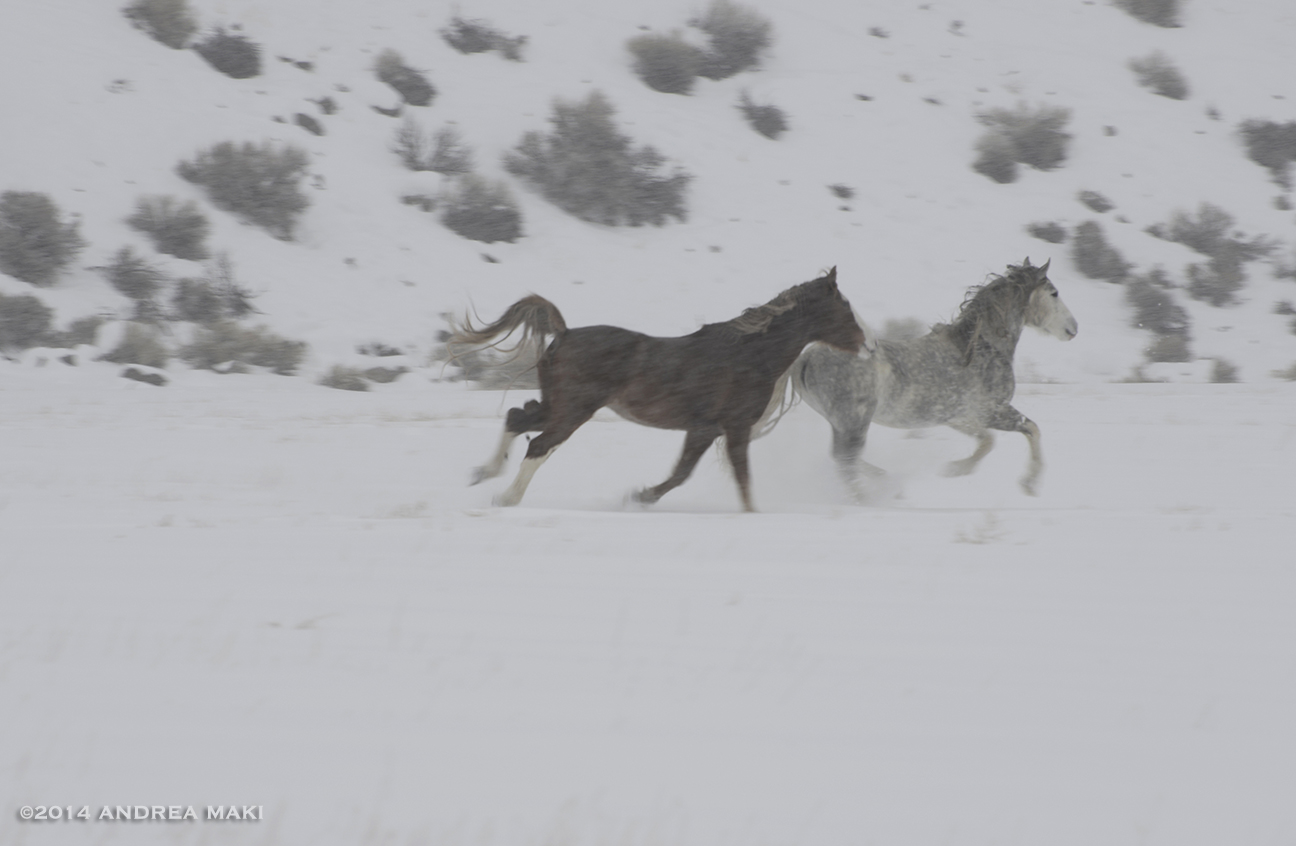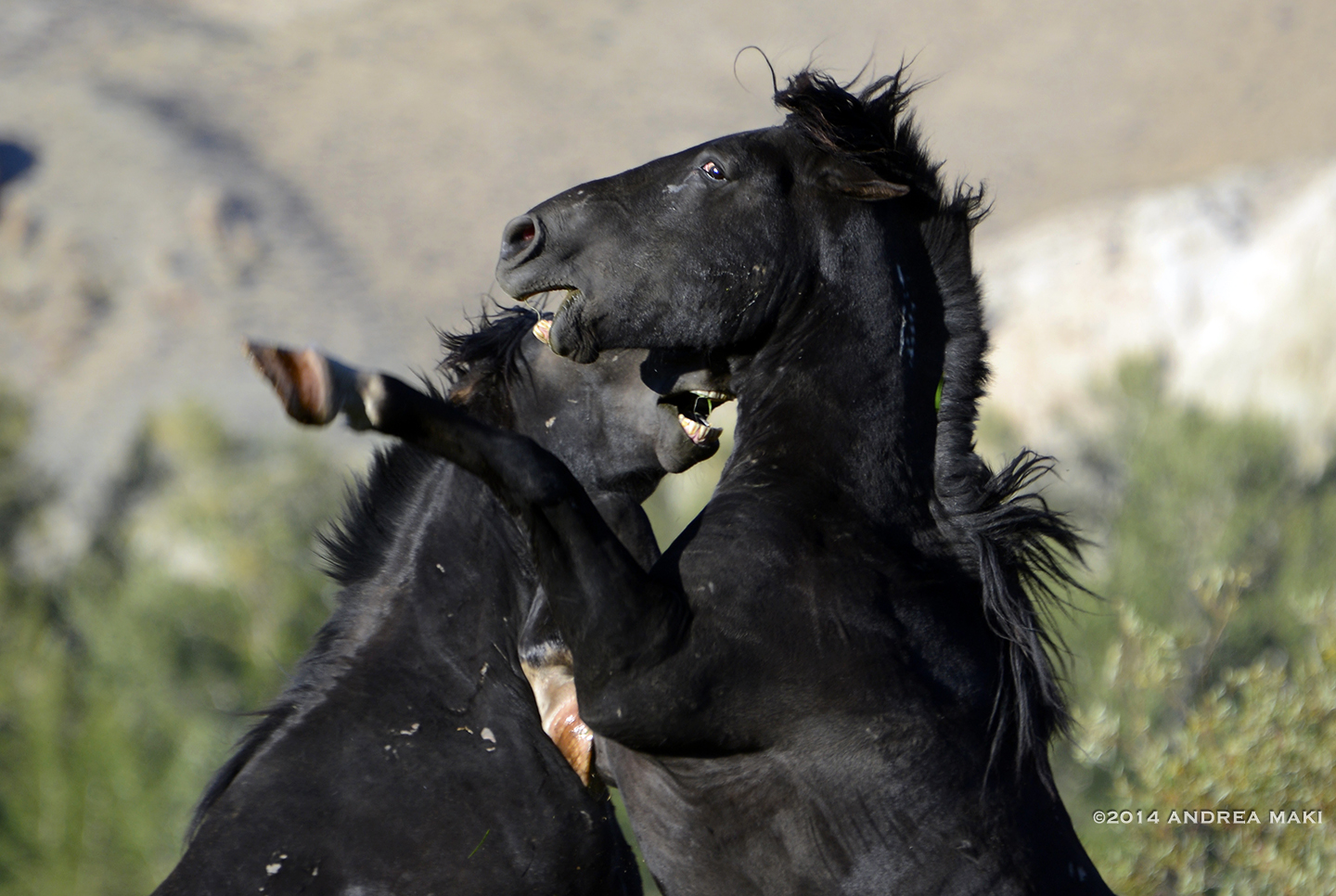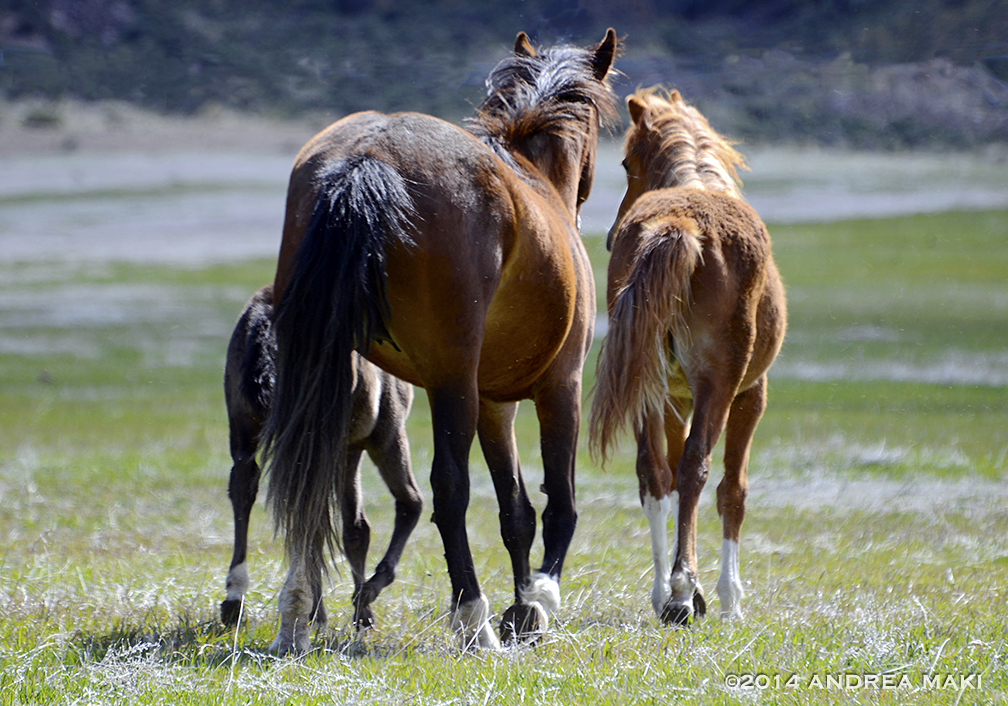“This is not but a mere fenced wild horse sanctuary. The objective of Wild Love Preserve is the protection and preservation of native ecosystems as an interconnected and balanced whole. Great beauty and benefit lie in the fact indigenous wild horses offer such unique opportunity to achieve this intent by walking new paths together.” -Andrea Maki, Founder + President
Wild Love Preserve engages public and private lands to address all facets of regional wild horse conservation on home turf, from collaborative work on the range, to those horses permanently removed from the wild by the Bureau of Land Management (BLM).
Founded in 2010, Wild Love Preserve's mission is to protect and preserve wild horses in their native environments and nurture the legacy of respective indigenous ecosystems as an interconnected whole, in collaborative, responsible and sustainable manners, with community engagement and benefit.
The Idaho BLM's November 2019 helicopter roundup of the Challis wild horses was the first conducted in seven years following October 2012, versus every 2-3 years which is the typical time-frame, due to Wild Love Preserve's pro-active work with the Challis-Idaho BLM and the implementation of our collaborative and humane management program on the range since 2013. As in 2012, Wild Love founder Andrea Maki worked on behalf of the Challis wild horses to reduce conflicts between the advocates, public and BLM, leading up, during and following this November 2019 Roundup. In 2018 Wild Love Preserve was able to work with the Challis-Idaho BLM on the Environmental Assessment of the Challis Herd Management Area as a collective whole to develop a 10-year pro-active management plan for the Challis Herd in conjunction with, and relation to, this indigenous ecosystem on our multi-use public lands as an interconnected whole. The collaborative work between WLP and the Challis-Idaho BLM continues to set new precedents which serve to benefit our work on all six herd management areas in Idaho, and be helpful for other wild horse regions in the west.
2020 marks the seventh year of our humane and collaborative Native PZP fertility management program which has proven successful in slowing population growth with free-roaming wild horses on the Challis HMA darting with the BLM on the range, and with Wild Love’s adopted wild horses. By design, Wild Love’s adopted Idaho wild horses have also served as our control herd because management on our private preserve mirrors our collaborative work on public lands. Native PZP has enabled us to keep our numbers at roughly 136 over the last seven years, and we’ve witnessed firsthand that it does not result in adverse behavioral issues, does not impact band or herd dynamics, has not altered the natural breeding season, does not negatively impact the fetus or cause birth defects if a pregnant wild mare is darted, and we have healthy babies born to our wild mares ensuring genetic viability.
“You never change things by fighting the existing reality. To change something, build a new model that makes the existing model obsolete.”
Why: There exists extreme controversy in the West. Social and economic conflict surround our iconic wild mustangs protected by law under the 1971 Free Roaming Wild Horse and Burro Act. There is stiff competition for resources on multi-use public lands between ranchers with grazing permits for private livestock, big energy, recreational use, environmental balance and native wild horses that know this western wild range as home. Designated public lands for wild horses have diminished drastically since 1971. Stakeholders are often locked in opposition when it comes to population count, management and whether wild horses are a native wildlife species. In fact, evolution reveals that the North American continent is the original birthplace of species equus.
There are well over 50,000 wild horses in longterm government holding facilities, while a guesstimated 70,000 (according to the BLM) remain on our wild public lands in 10 western states according to Bureau of Land Management (BLM). 53.8 million acres in 1971 is now restricted to 32.6 million acres with 26.9 million acres managed by the BLM. Helicopter roundups, removals, transport, and longterm holding facilities cost taxpayers over $80 million annually. However, wild horses are the ones to pay the ultimate price in capture, loss of freedom, family and often life. The BLM is responsible for managing native wild horses on our multi-use public lands as per the 1971 Wild Free-Roaming Horses and Burros Act. That said, the system is infamously broken and in need of a shift in perspective and the BLM is admittedly looking for new and sustainable wild solutions.
How: WLP remains steadfast in our collaborative conservation of native wild horses on public and private lands in a humane, non-lethal, inclusive manner that addresses total ecological health and balance. Our model offers a viable, fluid, all-inclusive option to existing federally funded helicopter roundups, and by design also benefits the immediate community, region and state of Idaho. Due diligence required, WLP has been in motion since April 2010, mending relations, building alliances, opening new lines of communication and subsequently established fluid working relations with the BLM and all stakeholders.
Focus on engaging all stakeholders in a new light to collaboratively manage native wild horses on wild public lands they call home must prove advantageous to surrounding community, region and state with new sources of revenue and job creation, while simultaneously saving taxpayer dollars.
“
Wild Love Preserve is about finding new solutions and ways of bringing people together. If you go in looking for a fight, you’re going to get a fight. If you approach with respect, kindness, patience and sincere interest in listening to differing perspectives, you can find common ground. We can rise above drawn lines if we so choose.”
Wild Love Preserve has garnered growing support from the region, ranchers, environmentalists, wild horse advocates and BLM officials, as we transform what was seen as problematic by some stakeholders, into a proud, lasting asset for community, region, state and nation. Success requires establishment of a vested interest by the community.
By way of face to face communications and boots-on-the-ground solutions, WLP has created a new model in co-existence. Our collaborative approach to addressing native wild horse population(s) on home turf offers a viable and beneficent alternative to the current government system. As result, Idaho is setting a new precedence in responsibly and humanely taking care of their own at home, benefitting the region and state.Wild Love Preserve is an American legacy project. Humane, fiscally responsible, sustainable population management; intent to nurture the legacy of native wild horses in conjunction with all wildlife species within this unique ecosystem on public lands; fluid co-existence with livestock where applicable; to support a healthy, genetically viable native herd and ecosystem in a lasting manner for future generations to equally experience, nurture and treasure.
WLP Programs include Responsible and Sustainable Wild Horse Population Management, Research and Documentation, WLP Adoption Project, Education and Awareness, Conservation and Sustainability, Community Involvement, Volunteerism, and Wild Horse Adventure Eco-tourism.
WILD LOVE PRESERVE BOARD MEMBERS
President: Andrea Maki
Vice President: Robert Maki
OFFICERS:
Courtney Clarke, Seattle
Kim Smith, P.h.D, Austin
Bryan Carroll, Oregon
Robin Lyda, Montana
Stone Gossard, Pearl Jam + Vitalogy Foundation, Seattle - Donor + Community Outreach
Randy Acker, DVM, Medical Director, Sun Valley Animal Center - Science + Education
Kimberly Wolfe Frank, Exec. Director, The Science and Conservation Center - Science + Education
Steve Adams, Exec. Director, Youth Employment Program, Salmon, ID - Youth Outreach
Stephen Bauchman, Challis Creek Cattle Co, Challis, ID - Ranching Community
Kevin Lloyd, Idaho Bureau of Land Management, Challis Regional Office - Agency Advisor
Carter Niemeyer, Boise - Wildlife Management
Adam Beaupre, Outfitter, ID/MT, Outdoor Adventure and Ecotourism
Mark Brown, Ketchum - Community Outreach
“The focus of Wild Love Preserve’s wild horse project in bringing all stakeholders together to work collaboratively with the Challis and Idaho Bureau of Land Management, is unique and imaginative and potentially opens the door to an entirely new paradigm for managing western wild horses. This model, if successful, may change a great deal and we here at the Science and Conservation Center are excited about partnering with WLP in this effort.
”
“Andrea (Maki), through her organization, has faced obstacles greater than the adoption and management. She has had to overcome the natural suspicion of the community and other public land users who have experienced other NGO’s disregard for social, economic, and cultural concerns of the community (as set forth in NEPA). She has crafted an understanding with the community, ranchers, and local government officials by demonstrating “on the ground solutions” without government monies... Over time she has demonstrated that her program when fully funded will solve the wild horse issue in the Custer WHMA through private management and PZP for population control to maintain the herd size. Her actions have quieted the ‘nay sayers’ in the agency, local and ranching communities. ”
GreatNonprofits Top-Rated Nonprofit : 2023 thru 2013
Wild Love Preserve is a 501(c)3 Non-Profit, Effective August 2010, Tax ID #27-3729450
























